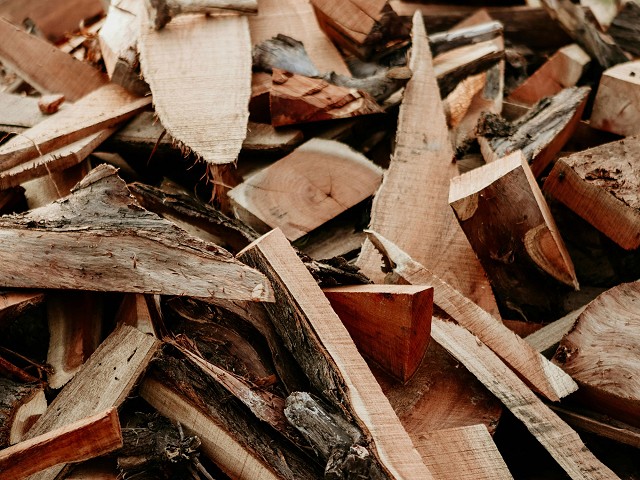Beech firewood
Beech firewood is a medium-hardness, dry, and fast-burning wood, recognized for its high calorific value, its lively and constant flame, and its low level of ash and smoke, making it ideal for fireplaces, stoves, and cooking, especially in pizza, roasting, and bakery ovens.
- High calorific value: Heats spaces quickly and efficiently.
- Live and constant flame: Produces combustion with very bright and continuous flames.
- Low ash and smoke content: Makes it easier to clean stoves and chimneys and generates less waste.
- Medium-hardness and good quality wood: Although it is a hard wood, it is considered semi-hard compared to others such as holm oak or oak.
- Easy to light: Its nature allows for quick and efficient lighting.
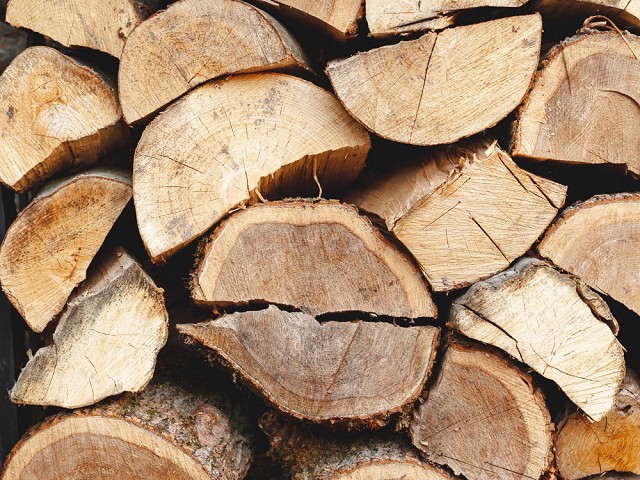
Oak firewood
Oak firewood is a hard, dense and resistant fuel, with a high calorific value that provides long-lasting heat and stable and long-lasting embers. It burns slowly and evenly, making it ideal for stoves, barbecues and ovens, although it is crucial that it is well dry for optimal performance. Additionally, it produces less ash than other woods, making cleaning easier, and is a sustainable fuel option if it comes from responsibly managed forests.
- Type of wood: It is a hard and dense firewood, belonging to the group of hard firewood.
- Calorific value: It offers a high calorific value, which means that it generates a lot of heat.
- Duration: Its combustion is slow and prolonged, resulting in long-lasting embers and constant heat over a long period.
- Resistance: It is a very resistant and durable wood.
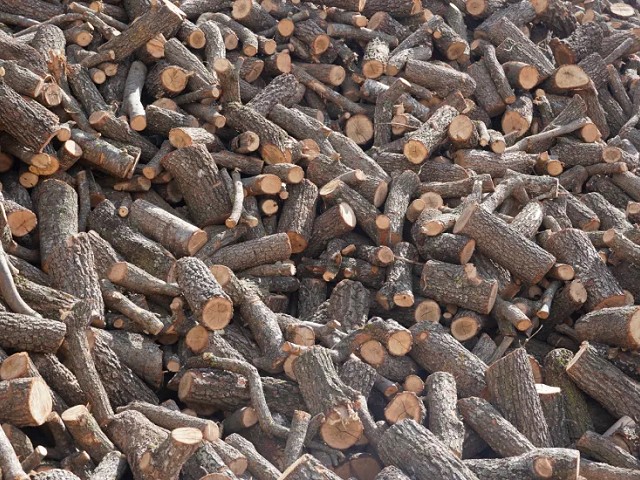
Olive wood
Olive firewood is a hard, dense wood with a high calorific value that burns slowly, producing constant and long-lasting heat. It generates a lively and long-lasting flame, little ash and few sparks, making it ideal for fireplaces, stoves and barbecues. In addition, when burned, it gives off a characteristic smoky aroma and flavor, enhancing the taste of food.
- High calorific value: It is one of the woods with the greatest density and capacity to generate heat, maintaining combustion for hours.
- Slow and long-lasting combustion: Produces long-lasting embers, which makes it ideal for maintaining constant heat in fireplaces and ovens.
- Low ash and sparks: When burned it produces a minimum amount of ash and is a wood with less gas content, which reduces sparks compared to other woods.
- Aroma and flavor: Its combustion gives off an aroma and a smoky and soft flavor that is appreciated in the kitchen, providing a unique quality to food.
- Low humidity: To optimize its use, olive firewood must be properly dried for at least 9 months to ensure a humidity of less than 20%.

Holm oak firewood
Holm oak firewood is a hard and dense wood, recognized for its high calorific value, which allows it to burn slowly, last a long time and generate stable embers. It is ideal for fireplaces and barbecues, as it produces very few sparks and minimal smoke, in addition to providing a special aroma to grilled foods. It is a durable and resistant firewood, which is considered one of the best options for heating and cooking due to its efficiency and the quality of its combustion.
- High density and hardness: It is a very hard and high-density wood, which gives it great durability and slow and constant combustion.
- High calorific value: It generates a large amount of heat when burning, surpassing other woods such as beech.
- Long lasting: Due to its high density, it burns for a long time, providing heat long and efficiently.
- Low emissions: Produces very little smoke and sparks, creating a safer and more pleasant indoor environment.
- Durable embers: Its characteristics make it ideal for cooking on barbecues, as it produces consistent and long-lasting embers.
- Characteristic aroma: Provides a special and pleasant aroma to foods cooked on the grill.
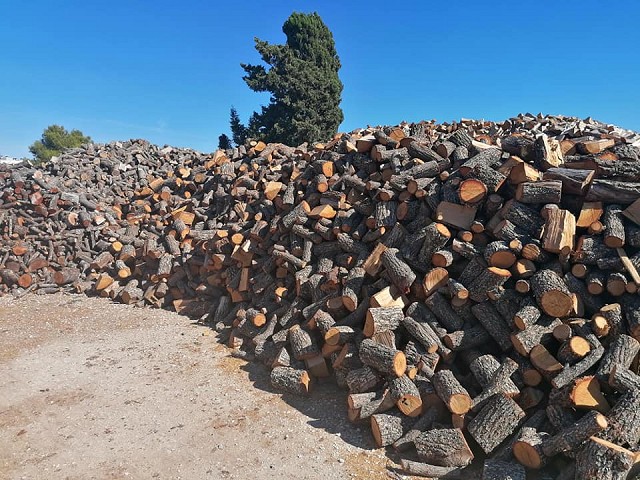
Almond firewood
Almond firewood is a hard wood, with a high calorific value and long life, ideal for heating and cooking, especially in barbecues and slow preparations, due to its slow and stable combustion and its characteristic soft and sweet aroma that adds flavor to food.
- Hardness and Durability: It is a hard wood with resistance and durability that guarantees a constant and prolonged fire.
- Calorific Power: It has a high calorific value, which makes it very efficient for maintaining heat in homes and for cooking that requires time.
- Aroma and Flavor: It provides a soft and sweet aroma, similar to that of orange wood but with a deeper profile, which is transferred to meats and preparations.
- Combustion: Its combustion is slow and uniform, producing a stable and long-lasting fire, with a good balance between flame and embers.
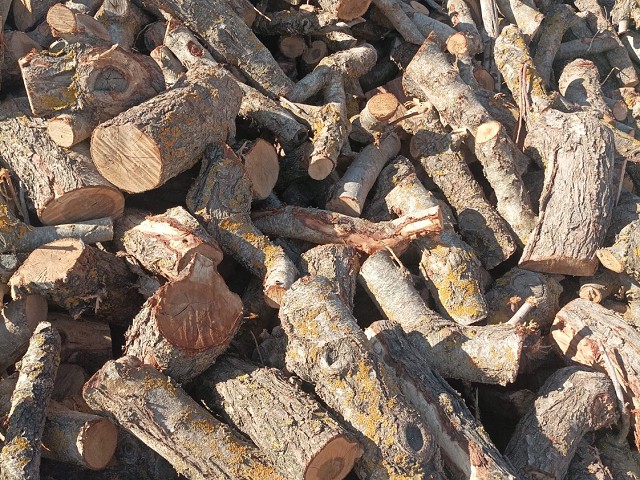
Pine firewood
Pine firewood is a soft wood known for its high resin content and ease of burning, which makes it ideal for starting fires or for short-term embers, as it gives off rapid heat and a lively flame.
- Softwood: Unlike denser woods, pine is easier to handle and burns faster.
- High resin content: This resin is responsible for the pine wood to ignite and burn very easily, generating an intense flame and immediate heat.
- Fast combustion: Its resinous nature and low density make pine burn very quickly, making it perfect for lighting a fire.
- Moisture content: Pine wood must be dry to burn properly, since green pine does not catch fire.

Chips and ignition material
Chips and starting material (or "starting material") are products designed to quickly and safely start a fire, igniting wood or charcoal in fireplaces, barbecues, stoves or ovens. Chips are small, dry pieces of wood, often pine because of their ease of ignition due to the resin, which are used as a natural fuel to transfer the flame to the main charge of wood or charcoal. The ignition material can refer to wood chips, or to other products such as ecological tablets made of wood fibers and paraffin, which are flammable and ensure clean and smokeless ignition.
